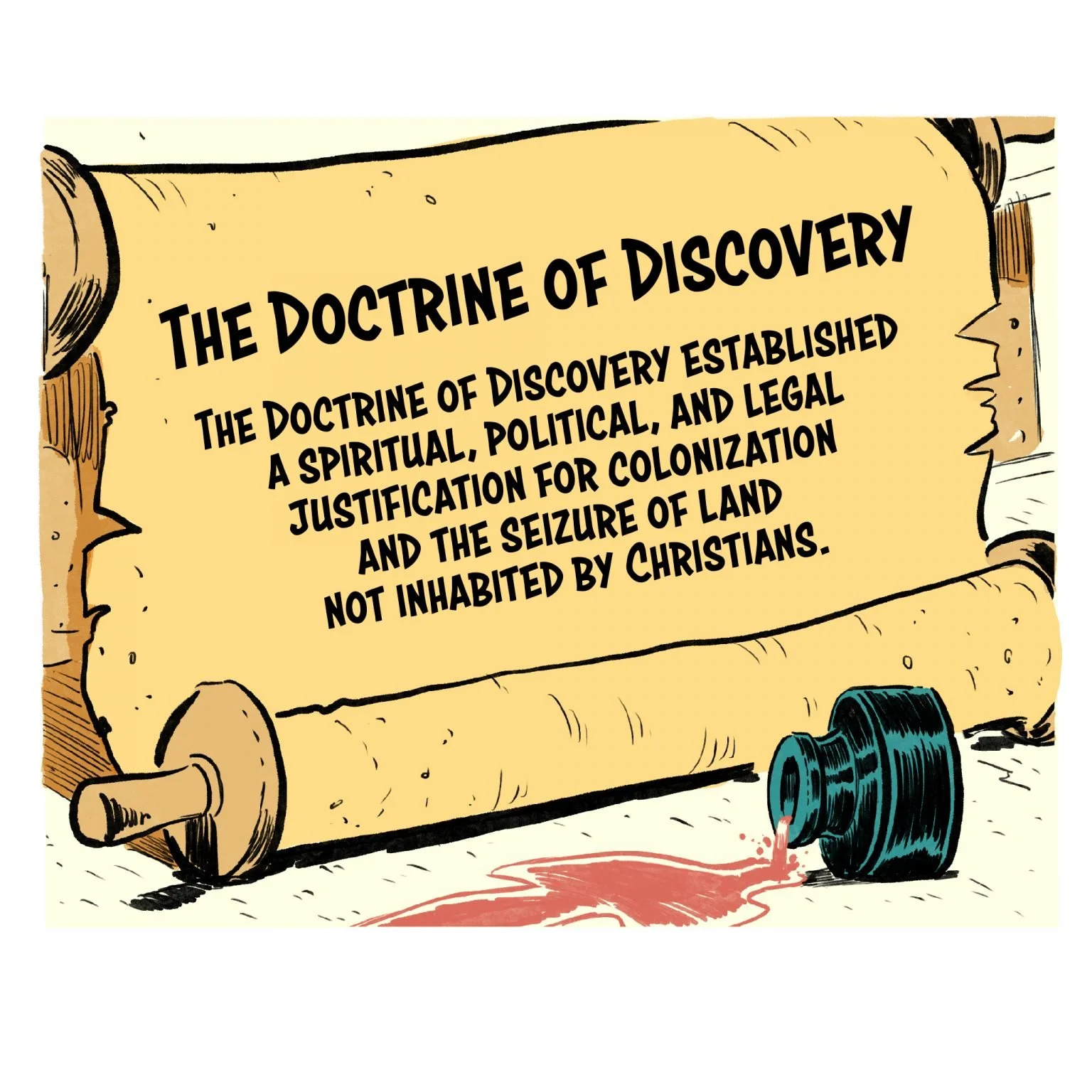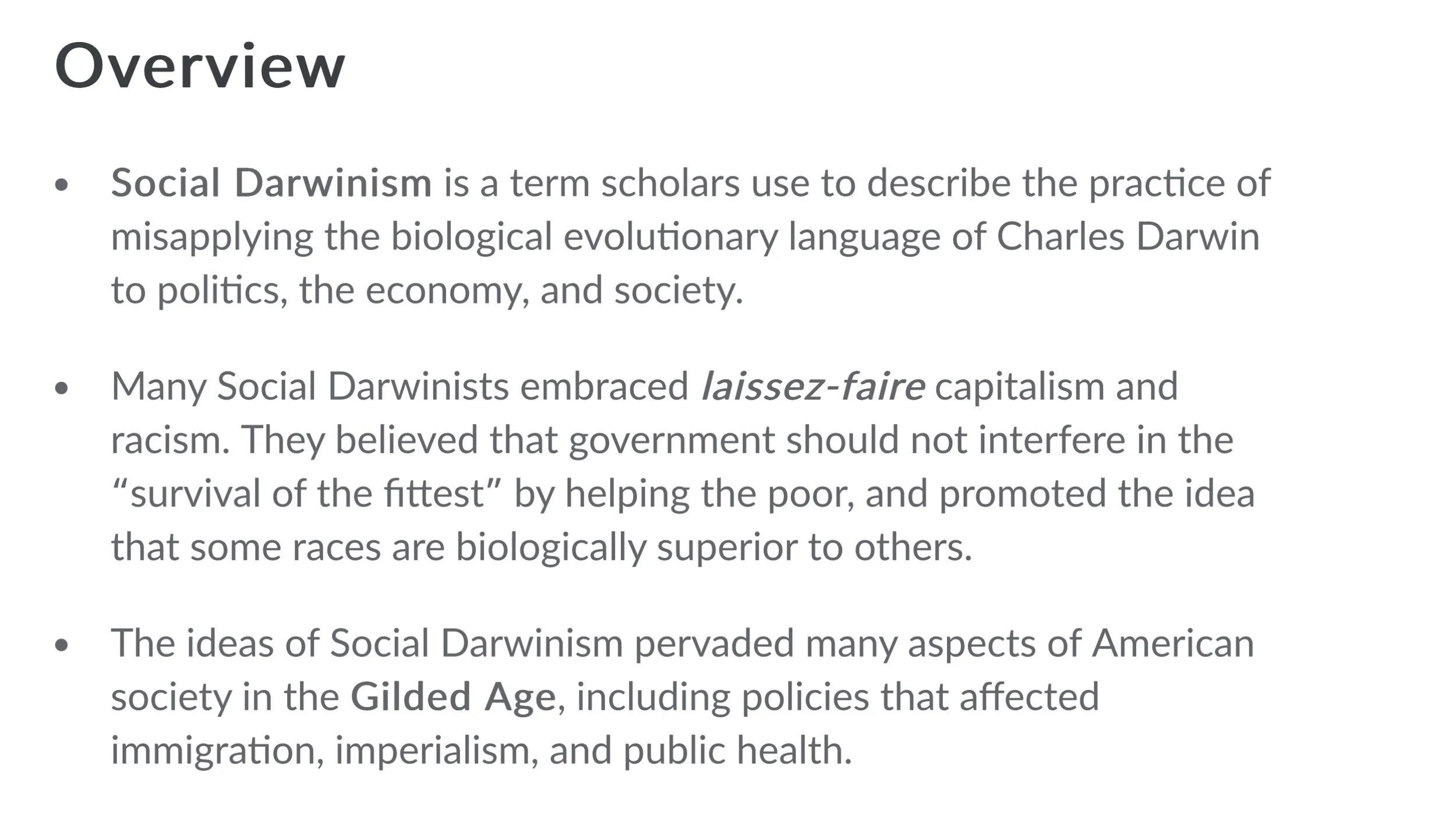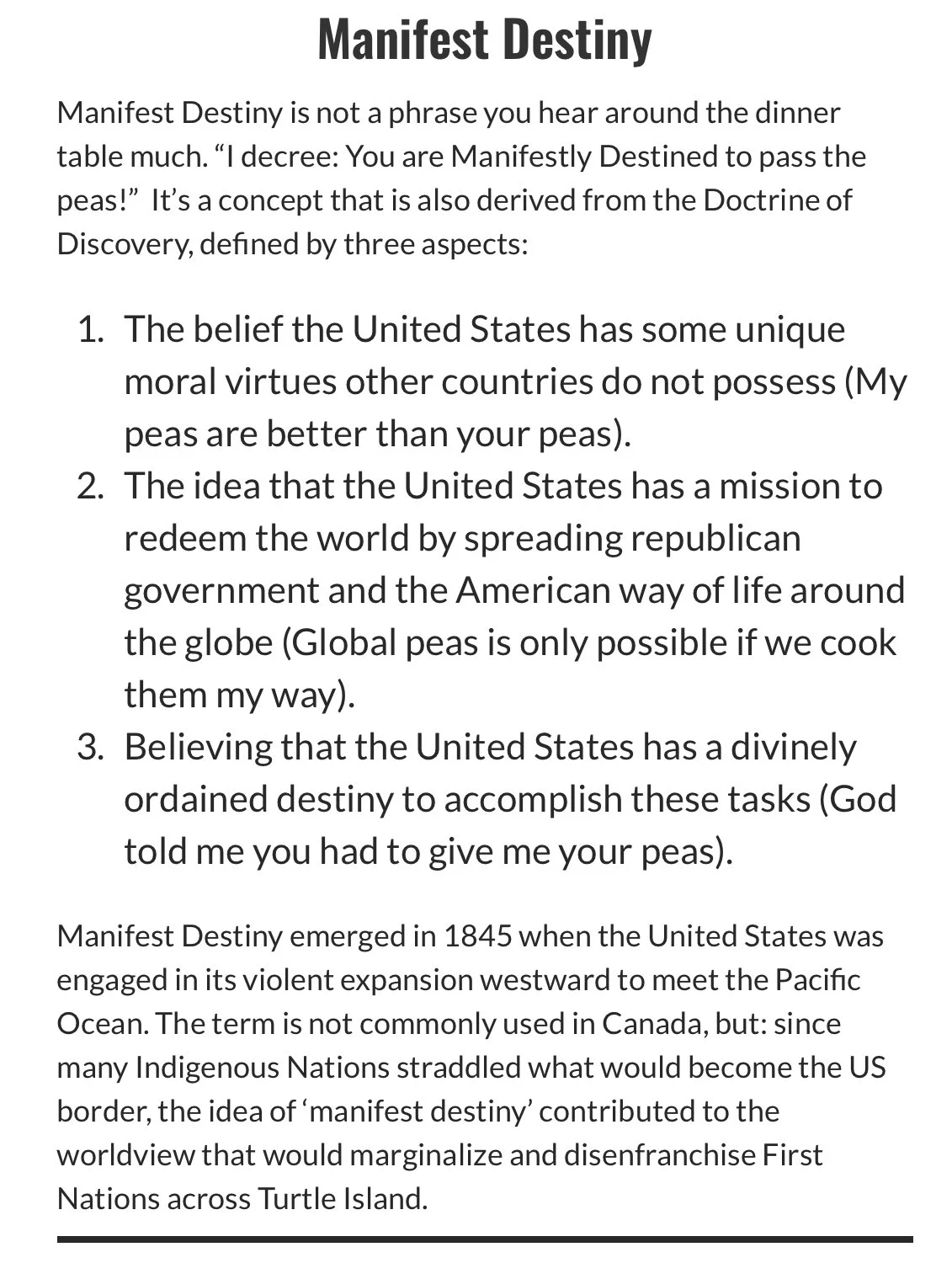See > American Museum of Natural History. “Misusing Darwin’s Theory.”
Under terra nullius, racist ideas such as those found in social Darwinism were brought to Canada to separate peoples by social class and ethnicity - in short, the course website notes how:
“…Indigenous Peoples were placed at the bottom of this invented hierarchy with European people at the top. Ultimately, these notions were infused into Canadian policies, affecting how Indigenous Peoples could exist, and use their land. While Indigenous Peoples were, and continue to be, organised within complex societies grounded in law, and despite the fact that they had never even heard of the Christian religion, the Doctrine of Discovery automatically relegated them to a status of less than human, or as the lawyers put it, a “pre-political state of nature”.
We know that Indigenous Nations had their own forms of governance, spiritual practices, and ways to manage their lands and waters that mutually benefited them and the environment. That was all disregarded by the Doctrine of Discovery and terra nullius.”
LABOUR THEORY OF PROPERTY: Wikipedia notes how this theory (also called the labour theory of appropriation, labour theory of ownership, labour theory of entitlement, or principle of first appropriation) was a theory of natural law that holds that property originally comes about by the exertion of labour upon natural resources. It was developed by the writings of 17th Century philosopher, John Locke who wrote that: “…land is only effectively occupied and therefore capable of legal possessions when a person hath mixed his Labour with, joyned to it something that is his own, and thereby makes it his Property.”
MANIFEST DESTINY: According to Kahn Academy, Manifest Destiny was “…the idea that white Americans were divinely ordained to settle the entire continent of North America. The ideology of Manifest Destiny inspired a variety of measures designed to remove or destroy the native population.” According to Wikipedia, “Manifest destiny was a phrase that represented the belief in the 19th-century United States that American settlers were destined to expand westward across North America, and that this belief was both obvious ("manifest") and certain ("destiny"). The belief was rooted in American exceptionalism and Romantic nationalism, implying the inevitable spread of the Republican form of governance. It was one of the earliest expressions of American imperialism in the United States of America.” The course website notes how MANIFEST DESTINY IS THE DOCTRINE OR BELIEF THAT THE EXPANSION OF SETTLER COLONIALISM THROUGHOUT THE AMERICAN CONTINENTS WAS BOTH JUSTIFIED AND INEVITABLE. The course website described it as follows:


